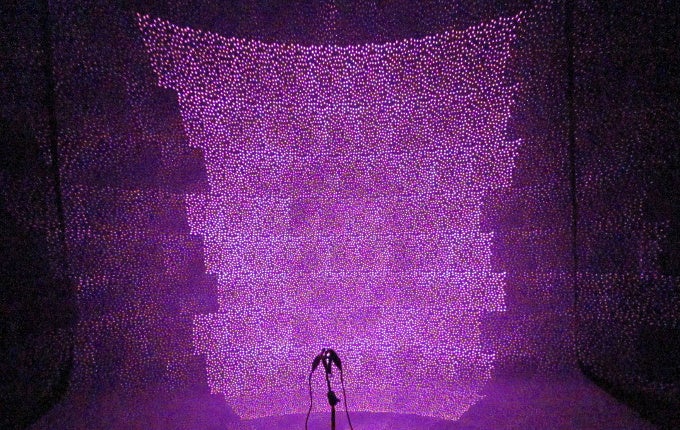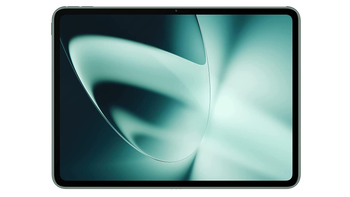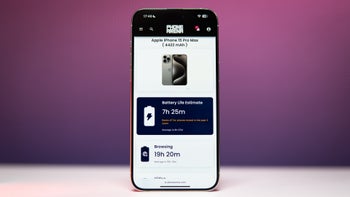Project Tango's super powers (IR projector) on display
Google’s Project Tango is a smartphone with technological superpowers - it is equipped with an advanced custom-made processor and Kinect-like technology that allows it to make 3D indoor maps and scan its surroundings. On the outside, it looks just like a regular Android phone - save for its slightly weird, chubby and blocky body - but on the inside it's different. Up until now, all we had was specs of the phone, but now - luckily - device surgeons from iFixit got their hands on a Project Tango device to give it the usual teardown treatment and expose its internals. They were looking for answers, of course: what chips make the unique 3D mapping and scanning features of Project Tango possible, and how easy is it to repair the device?
And the answers did not have to wait long. iFixit found a lot of interesting stuff under the hood. First, the Movidius Myriad 1 co-processor (the main system chip is the Snapdragon 800), a tailor-made chip that makes the fast and accurate location scanning of Project Tango possible. Movidius CEO claims that this chip could lie in the foundation of a future vision processing unit, much like we have a CPU and a GPU right now, but we’re yet to see about that.
It is not just that chip, though. The cameras are another crucial component that makes Project Tango the unique location-scanning device that it is. Interestingly, iFixit fount out that what looks like a regular 4-megapixel OmniVision camera on it, turns out to be a sensor capable of detecting both RGB and infra-red (IR) light. It is this capability to detect IR light that allows for depth perception. How? A powerful (for a smartphone) array of LEDs beams IR light in the form of a grid of dots. The size of those dots differs depending on how close (small dot) or how far (larger dot) an object is. The sensor in Tango’s camera then captures light information from those dots, and measures the size differences between them to come up with a depth map. This whole process is eerily similar to the one Microsoft uses in its Kinect. You can actually see that projected IR grid in the breath-taking image above.
Finally, what this teardown reveals is just how easy a device is to repair. Luckily, in designing this technological new-comer, Google made sure it's a device that is easy to tear down and replace parts on, which is great. Tango scored 9 out of 10 in iFixit's repairibility rankings.
Take a look at the step-by-step teardown below, but don't forget that as awesome as it all looks, Tango is not yet available for end-users. Only select developers can get it. Worry not, though - if the stars align right, such technology could arrive in smartphones in the not so distant future.
















Things that are NOT allowed: